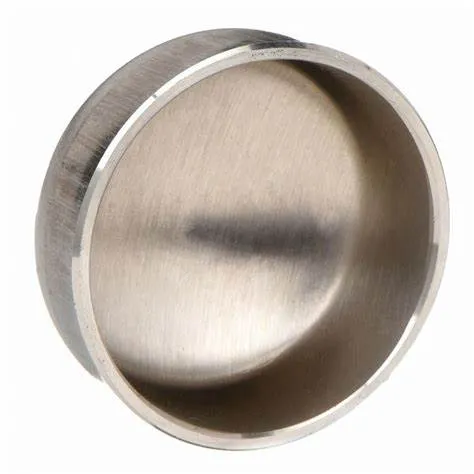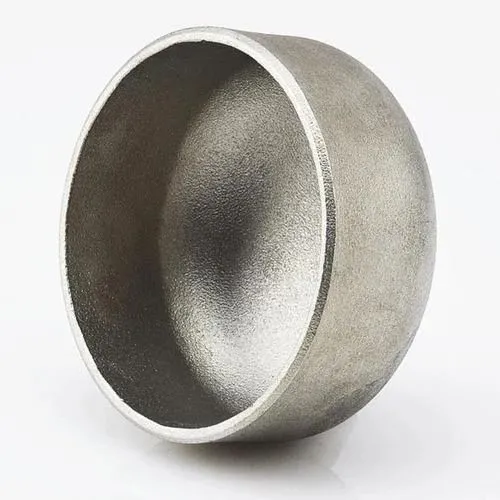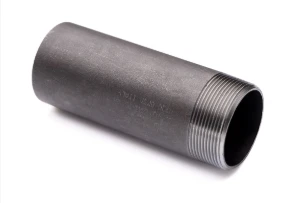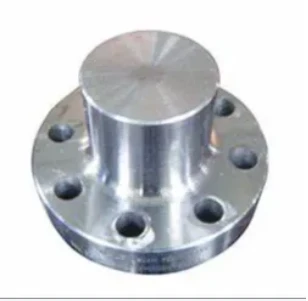A JIS B2311 egy japán ipari szabvány, amely lefedi a tompahegesztő csőszerelvényeket, beleértve a csőrendszerekben használt sapkákat is. A tompahegesztő sapkák arra szolgálnak, hogy lezárják a csővéget, és tömítést biztosítanak a szivárgás vagy szennyeződés megakadályozása érdekében. Íme a JIS B2311 tompahegesztő sapkák bemutatása:
- 1. JIS B2311 Standard:
- - A JIS B2311 szabvány előírja a csőrendszerekben használt tompahegesztő szerelvények tervezésére, méreteire, anyagaira, gyártására és tesztelésére vonatkozó követelményeket, beleértve a kupakokat is.
- - A szabvány biztosítja, hogy a JIS szabványoknak megfelelően gyártott sapkák megfeleljenek a minőségi szabványoknak és kompatibilisek legyenek más csőelemekkel.
- 2. Tompahegesztő sapka:
- - A tompahegesztő sapka a JIS B2311 szerint egy csővég biztonságos lefedésére és lezárására tervezett szerelvény, amely védelmet nyújt és megőrzi a csőrendszer integritását.
- - A kupakokat olyan helyzetekben használják, amikor a csővéget véglegesen vagy ideiglenesen le kell zárni, hogy megakadályozzák a szivárgást, a szennyeződést vagy a rendszer felületét.
- 3. Anyag és felépítés:
- - A JIS B2311 specifikáció szerinti tompahegesztő sapkák különféle anyagokból, például szénacélból, rozsdamentes acélból és ötvözött acélból állnak rendelkezésre, hogy megfeleljenek a különböző alkalmazási követelményeknek.
- - Ezeket a sapkákat szabványos konstrukciós módszerekkel gyártják, hogy a csővéghez hegesztve erős és szivárgásmentes csatlakozást biztosítsanak.
- 4. Alkalmazás és előnyök:
- - A tompahegesztő sapkákat különféle iparágakban alkalmazzák, beleértve az olajat és a gázt, a vegyi folyamatokat, a vízkezelő üzemeket és sok más iparágat, ahol a csővégződéseket biztonságosan le kell zárni.
- - A kupakok védelmet nyújtanak a csővégeknek a környezeti hatásokkal szemben, megakadályozzák a szennyeződést, és segítenek megőrizni a csőrendszer tisztaságát és integritását.
- 5. Telepítés és hegesztés:
- - A megfelelő szerelési gyakorlat, beleértve a helyes beállítást, a csővég előkészítését és a hegesztési technikákat, elengedhetetlen a tompahegesztő sapkák felszerelésekor a szoros és szivárgásmentes tömítés biztosítása érdekében.
- - A hegesztés elterjedt módszer a kupakok csövekre való rögzítésére, biztonságos és tartós lezárást biztosítva, amely ellenáll a nyomásnak, a hőmérséklet-ingadozásoknak és a rendszeren belüli folyadékáramlásnak.
- Összefoglalva, a JIS B2311 tompahegesztő sapkák a csőrendszerekben használt kulcsfontosságú alkatrészek a csövek végének biztonságos tömítésére és védelmére. Ezek a sapkák megfelelnek a szabványos követelményeknek, hogy biztosítsák a minőséget, a megbízhatóságot és a kompatibilitást az ipari alkalmazásokban, ahol csőzárásra és védelemre van szükség.
What Is a Butt Welding Cap and How Is It Used in Industrial Piping?
In industrial piping systems, end-of-line sealing and branch closures require robust solutions. A butt welding cap serves as a critical component for terminating pipes securely. By providing a seamless, welded closure, this fitting maintains system integrity, prevents leaks, and supports compliance with industry standards.
What Is a Butt Welding Cap?
A butt welding cap—also called a pipe end cap or buttweld end cap—is a round fitting designed to close off the end of a pipe. It’s manufactured to match the pipe’s outer diameter and schedule, with either a hemispherical or flat face. To install, both the pipe end and cap are beveled to form a V‑groove, enabling full‑penetration, fusion welds. Common materials include carbon steel, stainless steel, nickel alloys, and other engineered grades, chosen to satisfy pressure, temperature, and corrosion‑resistance requirements.
How Is Butt Welding Cap Used in Industrial Piping?
Butt welding caps find application across oil & gas, petrochemical, power generation, water treatment, and general process industries for both permanent and temporary closures. During hydrostatic testing, technicians install caps to seal off sections of piping while monitoring for leaks. In new construction or retrofit projects, caps terminate branch lines, future tie‑in spools, or dead‑end mains until system expansion. Welders prepare each joint by cleaning and beveling surfaces, aligning the cap precisely, and executing a root pass followed by filler passes per the qualified Welding Procedure Specification (WPS). Post‑weld heat treatment and non‑destructive examination (NDE)—such as radiography or ultrasonic testing—verify weld integrity and compliance with ASME B16.9 and related standards. Additionally, temporary caps enable safe isolation during maintenance, allowing for segment testing and dewatering under regulatory protocols.
Benefits and Best Practices
Butt welding caps offer a smooth‑bore transition that minimizes flow disruption and stress concentration. Their full‑penetration welds deliver exceptional structural strength and leak resistance. To optimize performance, engineers should:
Select caps with matching material grades and wall thicknesses
Adhere to proper bevel angles and joint fit‑up tolerances
Follow qualified WPS protocols rigorously
Consider cladding or protective coatings in corrosive environments to extend service life
Regular inspection and thorough documentation ensure long‑term reliability and safe operation under demanding conditions.
Butt welding caps are indispensable components for achieving durable, leak‑proof pipe terminations in a wide range of industrial applications.
Butt Welding Cap FAQs
What is a butt welding cap?
|
What materials are commonly used?
|
What standards govern butt welding caps?
|
How are butt welding caps installed?
|
Where are butt welding caps typically used?
|
What are the advantages of threaded caps?
|
















